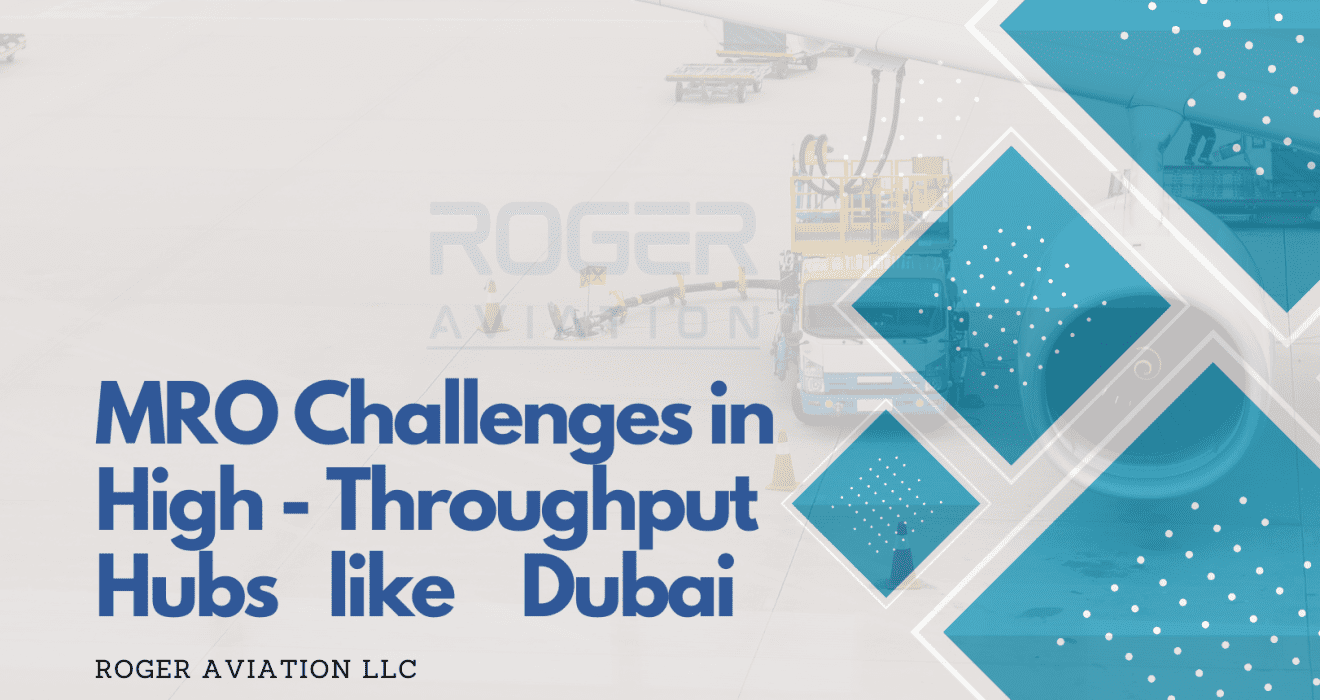MRO Challenges in High-Throughput Hubs like Dubai
In the world of aviation, time is measured in minutes, and efficiency is measured in safe departures. Nowhere is this more critical than in high-throughput hubs like Dubai International Airport (DXB)—one of the busiest airports in the world, connecting continents with precision and speed. As passenger and cargo flows surge, the role of Maintenance, Repair, and Overhaul (MRO) operations becomes more complex and mission-critical.
A Brief History of MRO in Dubai
The Middle East’s aviation story has been a rapid one. In the 1980s, Dubai was still an emerging player in the global aviation map. With the establishment of Emirates Airline in 1985 and Dubai International’s subsequent expansion, the demand for world-class MRO capabilities grew exponentially. By the early 2000s, Dubai had positioned itself as a global connector, and its maintenance ecosystem had to evolve to support wide-body fleets like the Boeing 777 and Airbus A380.
The creation of Dubai Aerospace Enterprise (DAE) and the expansion of local MRO providers marked a turning point—transforming the region into a recognized hub not just for flight operations, but for aviation maintenance excellence.
Modern-Day Challenges in High-Throughput Hubs
Despite decades of investment and innovation, high-density airports like Dubai face unique MRO challenges:
1. Time Pressure
Every aircraft grounded for maintenance is an aircraft not generating revenue. With tight turnaround schedules, MRO teams must perform line maintenance, daily checks, and unscheduled repairs within very short timeframes. For hubs like Dubai, where connecting flights run on razor-thin schedules, even a 30-minute delay can ripple across continents.
2. Workforce Optimization
Skilled technicians are the backbone of MRO. However, the global aviation industry faces a shortage of licensed engineers and mechanics. In high-throughput hubs, where hundreds of aircraft movements occur daily, this shortage amplifies operational stress. Training, workforce allocation, and balancing expertise across A, C, and D checks are continuous challenges.
3. Logistics & Parts Management
In a city like Dubai, where aircraft from nearly every global carrier pass through, parts availability and supply chain speed are critical. A single missing component can ground an aircraft. The rise of predictive logistics and digitally managed spare part inventories has helped, but coordinating across OEMs, suppliers, and local regulations remains complex.
Technology as a Solution
To overcome these hurdles, leading hubs are increasingly turning to digital MRO platforms. Predictive analytics, IoT-enabled aircraft monitoring, and AI-driven scheduling ensure that maintenance is proactive rather than reactive. Integrated systems like CAMO (Continuing Airworthiness Management Organization) paired with MRO tools streamline compliance, reduce paperwork, and free up technicians to focus on what matters—keeping aircraft airworthy and on time.
Roger’s Perspective
At Roger Aviation LLC, we recognize that high-throughput hubs like Dubai demand more than traditional maintenance workflows. Our focus is on delivering digitally connected MRO solutions that optimize manpower, minimize downtime, and enhance logistics visibility. By centralizing maintenance records, enabling predictive planning, and ensuring real-time tracking of parts and personnel, Roger helps operators reduce Aircraft on Ground (AOG) risks while maintaining the speed that Dubai is known for.
The Road Ahead
As global air traffic continues to grow—especially in regions like the Middle East—the MRO ecosystem must keep pace. History shows that Dubai has never settled for “good enough” in aviation. From a modest desert runway in the 1960s to becoming one of the world’s busiest international airports today, the city has proven that vision and innovation drive growth.
For MRO, the lesson is clear: the future is digital, connected, and data-driven. And for operators in hubs like Dubai, the challenge is not just to keep up—but to lead.

